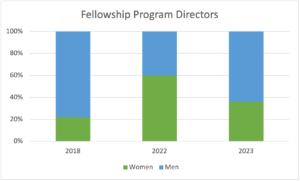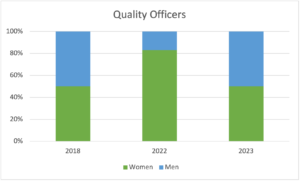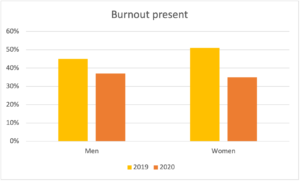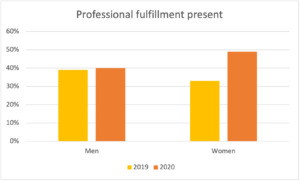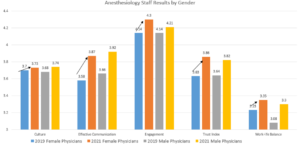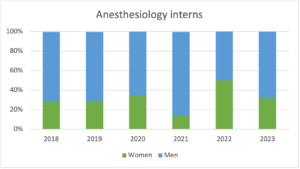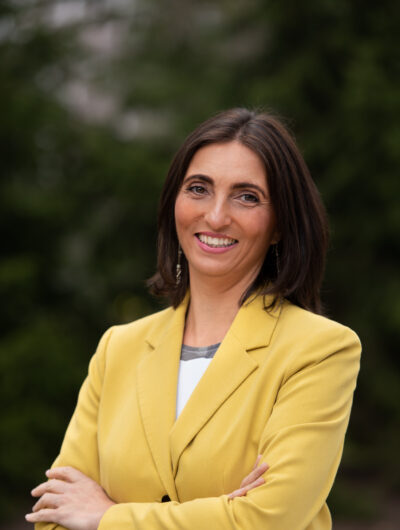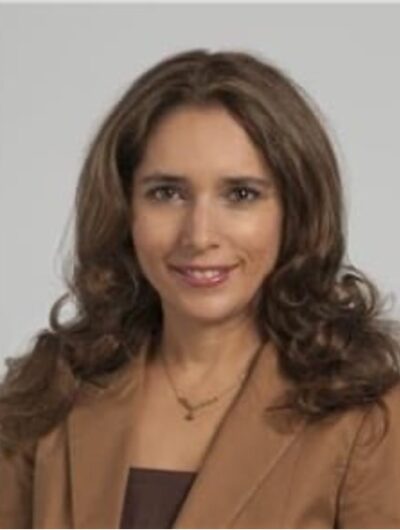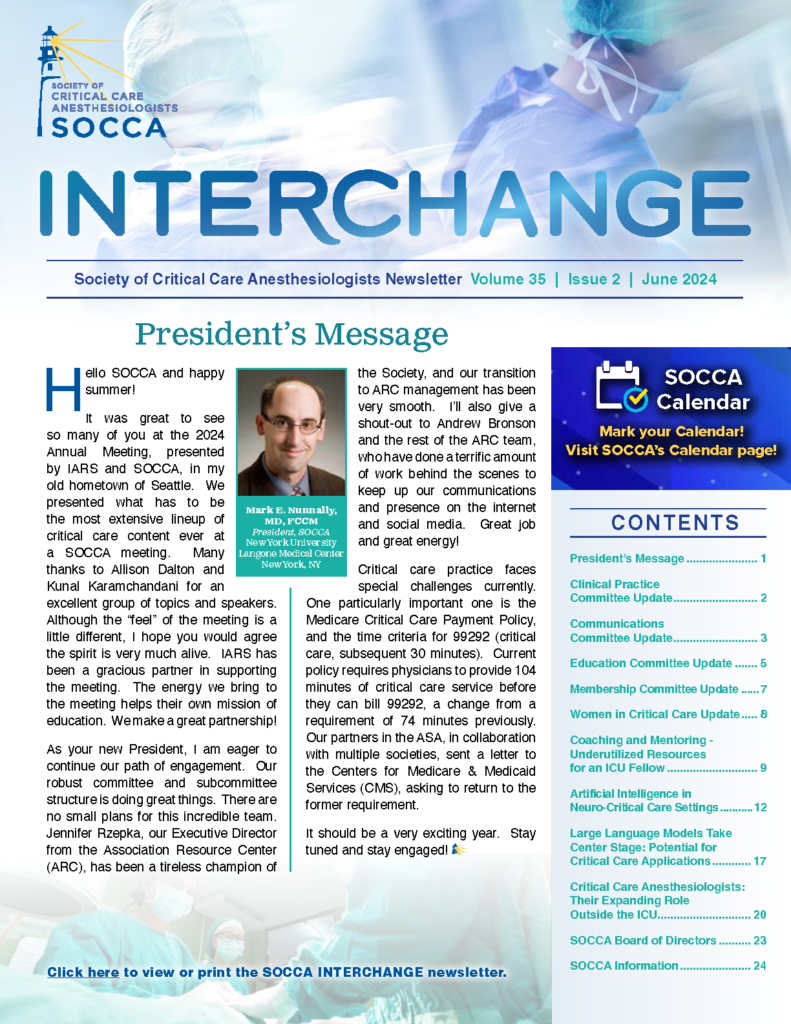“SWAT” (Supporting Women Anesthesiologists to Thrive) Program Crafted by Women, Sponsored by Leadership
Background
A diverse workforce has the potential to mitigate healthcare disparities, and improve patient satisfaction. 1 Diverse leadership offers key benefits as described by 14 members of Forbes Coaches Council in a recent publication. 2 They state that teams composed of members that are diverse in terms of gender, generational, cultural, sexual, or professional characteristics bring greater depth of experience and perspectives; this enables greater likelihood of seeing positive change and innovation. In times of uncertainty and rapid change, a diverse leadership team promotes unique and inclusive decision-making by increasing the ability to attract and retain top talent through fostering a sense of belonging, trust and psychological safety. According to a study by JAMA Network Open, just 15.3% of health system CEOs and 17.5% of board presidents were women in 2021. 3 The low representation may lead to the misconception that women are not equipped to lead. Nevertheless, a report by McKinsey & Company and Leanin.org found that women more often than men, provide emotional support to employees, take into account their personal well-being, and help them navigate work-life challenges. Women also intervene to prevent or deal with burnout more often than men. 4 This report also highlights that female leaders are more likely to face macroaggressions, such as being interrupted or spoken over, having their judgement questioned within their area of expertise, or having others comment on their emotional state. Moreover, women are consistently more burnt out than men. As a consequence, the growing gap in leadership leads to more women considering leaving the workforce. Alice Eagly and collaborators showed in a meta-analysis that women demonstrate a more dynamic transformational leadership style. There is also evidence that team collaboration is greatly improved by the presence of women in the group according to a 2010 study. Business coach Hira Ali describes internal and external barriers that make women and minorities more vulnerable at work. These internal factors are more common in women and minorities and include the inability to self-promote, perfectionism, imposter syndrome, and stereotype threat, among others. 5 Dr. Julie Silver describes external factors that impede women's advancement in academic medicine as structural gender bias by the employer, medical societies, and medical journals. 6
“SWAT” Program (Supporting Women Anesthesiologists to Thrive)
We embarked on a journey in 2018 to advocate for women and catalyze change for anesthesiologists at the Cleveland Clinic. First, we collected data provided by the Cleveland Clinic Women Professional Staff Association that showed a disparity between the prevalence of women in the workforce compared with the prevalence of women in leadership positions within the Anesthesiology Institute. Engagement of female anesthesiologists was consistently lower than men and burn-out was higher in women across the institute. We also identified a disparity in the prevalence of women trainees within the anesthesiology residency training program. We identified the need to foster professional development and leadership skills among women within the Anesthesiology Institute, creating a nurturing environment to help with engagement.
Dr. Pilar Castro and Dr. Silvia Perez-Protto attended the course entitled “Career Advancement and Leadership Skills for Women in Healthcare” led by Dr. Julie Silver at Harvard Medical School. They obtained the skills necessary to prepare a program proposal. After approval and sponsorship by Dr. Christopher Troianos, Anesthesiology Institute Chair, they founded the “SWAT Program” that has grown and thrived to its present state.
The goal of the SWAT program is to facilitate professional development and promote the acquisition of leadership skills for women staff and trainees within Anesthesiology. The goal was also to promote networking amongst women anesthesiologists and trainees with the aim of increasing the feeling of engagement and well-being at work. The program consists of an annual workshop and quarterly activities covering the topics that matter most to women. A survey is offered yearly at the end of the workshop as a needs assessment, while also exploring the barriers women encounter in their professional growth. This survey identifies the topics for the following year. The program offers annual scholarships to attend the leadership course at Harvard for two women staff, with their commitment to plan the program the following year. The institute also offers administrative support to organize the events.
The program metrics include:
- Promote inclusion of women at Anesthesiology Institute leadership positions as measured by the number of women in leadership positions
- Improve faculty development for women as measured by the number of women faculty with academic rank at the Cleveland Clinic Lerner College of Medicine
- Engagement scores as measured by the Press Ganey survey offered by the Cleveland Clinic
- Burnout prevalence as measured by the Stanford survey offered by the Cleveland Clinic
- Anesthesiology women trainees as measured by the rate of women in anesthesiology residency and fellowships
The workshop and quarterly activities are open to all women staff and trainees, generating an inclusive and supportive environment, creating natural opportunities to establish mentoring relationships.
The program content has been tailored according to feedback from the annual survey. The first year it focused on internal work helping women to set goals, clarify values and articulate a purpose statement.
The following year it was focused on building leadership skills like negotiation, presentation, influence, and advocacy skills. Next, it was focused on self-awareness, dealing with microaggressions, and how to network effectively by creating social capital. During the Covid pandemic, we pivoted to virtual sessions offering tools focused on mindfulness. Then, we offered short sessions to help women put their new-found knowledge into action by developing their goals in an intentional way, working on how to communicate their vision, and leading with your strengths. The planning team decided that it was important to engage the department chairs in the workshops, so they are invited to attend the first portion of them. The topics of this new format workshop focused on how to build diverse leadership teams and gender pay gap. All the events have a didactic portion, skills practice session, and inspirational stories of women leaders in different areas. All the events include time for networking and relationship building.
Changes Seen
In the first survey in 2018, women stated that one of the barriers for them to advance into leadership positions was the lack of awareness of open leadership positions. Moreover, women stated that many recruitment processes lacked female representation. Since 2019, the institute chair committed to post all leadership positions in advance and to consistently include women in staff and trainee recruitment committees. Women representation in internal leadership positions—such as fellowship program directors, and quality officers— has increased. (Fig.1, 2) Even though we cannot attribute these changes solely to this work, we have seen a decrease in burnout prevalence and growth in women engagement, over time. (Figs. 3,4)
The recruitment of women in residency has shown an overall increase over time, noticing a huge drop during the pandemic. (Fig.5) We learned from the post-application survey that women did not choose Cleveland Clinic because they need to be in the vicinity of family, due to their families’ needs and spouse opportunities. Since then, we have organized a specific recruitment event for female applicants to our anesthesiology residency program, hosted by women staff and residents; there are breakout rooms to discuss work-life integration, diversity, leadership, career tracks and the SWAT program. Many of our residents share this event has been impactful in their decision to join the residency program.
Women in academic ranks has also shown increased regular track appointments:
- Full professors from 1 to 4
- Associate professors from 3 to 6
- Assistant professors from 5 to 9
Unfortunately, we have not seen an increase in Department Chair representation, staying in the range of 10%. These appointments are done by Board of Governors searches.
Conclusions
The SWAT program has been successful because it was tailored by women anesthesiologists based on their needs, with strong leadership support and sponsorship. The leadership commitment is shown by changing practices that were adding bias to the internal selection process, and by encouraging women to apply for positions and academic promotions. An impactful piece written by Ngai and collaborators highlights the problems professional women face in the workplace and offers tangible actions to address them. 7 Many of the actionable solutions were implemented as a result of the evolving SWAT program like tracking diversity metrics for promotion and advancement, creating diverse selection committees, and transparency on the open leadership positions to offer equitable opportunities. Even though it is hard to say that engagement and the feeling of burnout has decreased because of the SWAT only, the program has created the opportunity to network, think, and grow together that trainees and faculty cherish.
References
- Jackson CS, Gracia JN. Addressing health and health-care disparities: the role of a diverse workforce and the social determinants of health. Public Health Rep. 2014;129 Suppl 2(Suppl 2):57-61.
- 14 Important Benefits Of A More Diverse Leadership Team. Forbes. 2021.
- Odei BC, Seldon C, Fernandez M, et al. Representation of Women in the Leadership Structure of the US Health Care System. JAMA Netw Open. 2021;4(11):e2136358.
- Rachel Thomas MC, Kate McShane Urban, Gina Cardazone, Ali Bohrer, Sonia Mahajan, Lareina Lee, Alexis Krivkovich, Jess Huang, Ishanaa Rambachan, Tifanny Burns, Tijana Trkulja. Women in the workplace 2021. 2022; https://wiw-report.s3.amazonaws.com/Women_in_the_Workplace_2021.pdf.
- Ali H. Internal And External Challenges Faced By Women. Forbes. 2020.
- Silver J. She leads healthcare. https://sheleadshealthcare.com/.
- Ngai J, Capdeville M, Sumler M, Oakes D. A Call for Diversity: Women, Professional Development, and Work Experience in Cardiothoracic Anesthesiology. J Cardiothorac Vasc Anesth. 2023;37(6):870-880.
